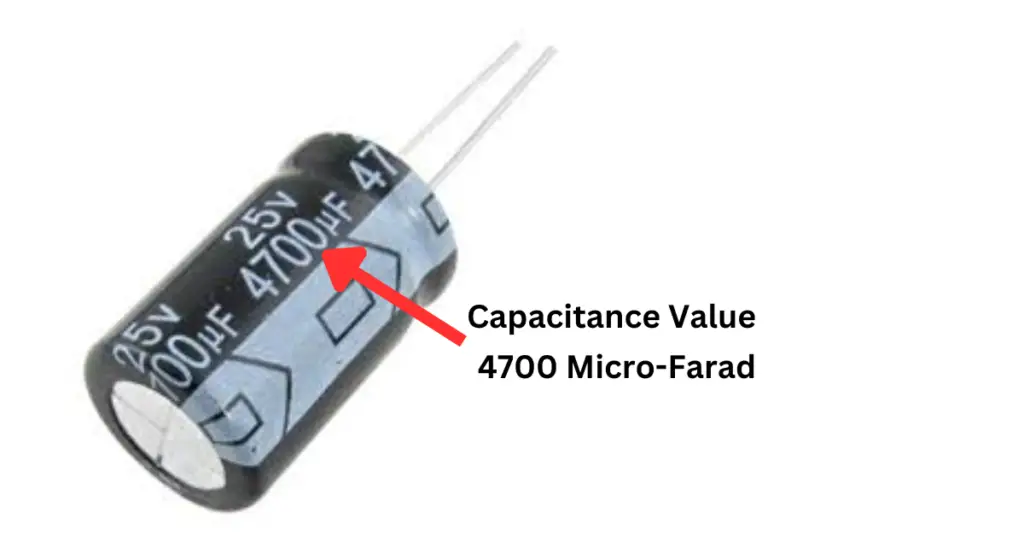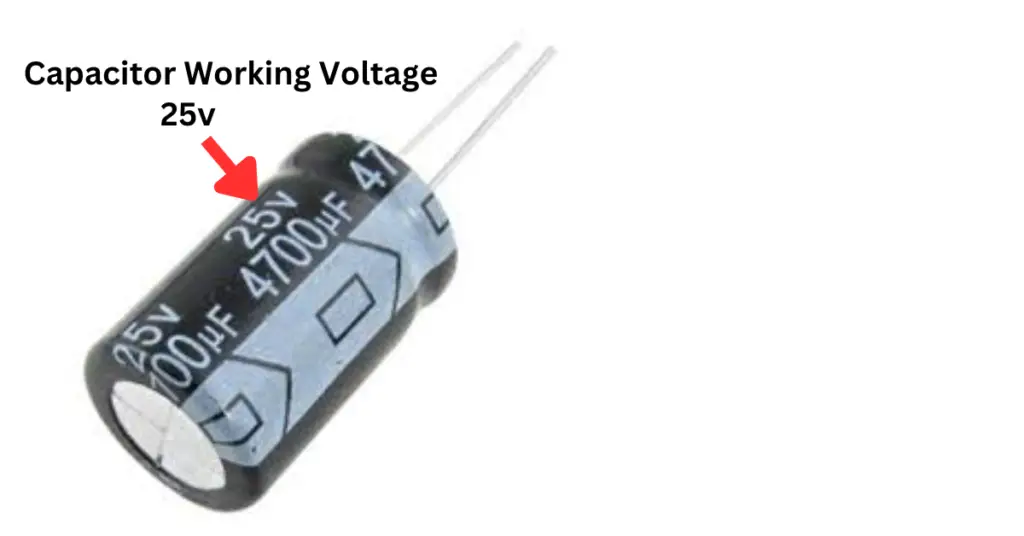This article describes various important characteristics of capacitors which are important to understand for every electrical and electronics engineer for the selection of capacitors for various applications.
A capacitor is one of the basic circuit components in electrical and electronic circuits. Capacitors are used to store energy in the form of an electrostatic field. Capacitors are available in several different types and sizes. Each type of capacitor has its unique characteristics and specifications that impact its performance. In this article, we will explore all the crucial characteristics of capacitors and will learn how they affect the behavior of the electronic circuit.
Characteristics of Capacitors
The following are some crucial capacitor characteristics that help in selecting a right capacitor for our circuit:
- Nominal Capacitance
- Tolerance
- Working Voltage
- Leakage Current
- Working Temperature
- Temperature Coefficient
- Polarization
- Equivalent Series Resistance (ESR)
- Equivalent Series Inductance(ESL)
- Frequency Dependency
Now, we will discuss the each capacitor characteristic in detail.
(1). Nominal Capacitance:
The Nominal Capacitance, usually denoted by C, of a capacitor is the most elementary capacitor characteristic. This value of nominal capacitance for a practical capacitor is generally measured in micro-Farads (μF), nano-Farads (nF), or pico-Farads (pF). The value of nominal capacitance is specified on the body of the capacitor either as numbers or letters or color bands.

The nominal capacitance of a capacitor can change with a change in the supply frequency and the operating temperature.
For a small-sized ceramic capacitor, the nominal capacitance can be of the order of one pico-Farad, (1 pF ). Whereas, the large-sized electrolytic capacitors can have a nominal capacitance of the order of one Farad (1 F) and thousands of Farads.
(2). Capacitor Characteristics–Tolerance:
The permissible deviation in capacitance value from the rated value is called tolerance. The capacitance tolerance value can vary from -20% to 80%. The lower tolerance shows the capacitance value is closer to its rated value. For example, a 200 µF capacitor with +/- 20 % tolerance will have a capacitance in the range of 160 µF to 240 µF. The common tolerance values are ±5%,±10%:,±20%.
The selection of tolerance of the capacitor depends on the types of applications. For example, you can select a higher tolerance value for filtering applications, however, you need lower tolerance capacitors for timer circuits. Capacitors with lower tolerances are more precise but more expensive.
(3). Working Voltage:
The Working Voltage is the second most important characteristic of a capacitor. It provides information about the maximum AC or DC voltage that we can apply to the capacitor without its failure. The working voltage is usually marked on the body of the capacitor. It is typically the DC working voltage of the capacitor.
For a practical capacitor, the AC and DC voltage values are different. Where the AC voltage of the capacitor is the RMS value of the voltage.
In practice, the commonly rated DC voltages of capacitors are 10 V, 16 V, 25 V, 35 V, 50 V, 63 V, 100 V, 160 V, 250 V, 400 V, and 1000 V. These voltages are mentioned on the body of the capacitor.

The capacitors can be connected in series connections when they are to be used for higher voltage. Suppose, you want to use a capacitor for 2000 volts, in this case, two capacitors of 1000 volts rating can be connected in the series.
(4). Capacitor Leakage Current:
In a capacitor, a dielectric is used to separate the metal plates. Practically, the dielectric material is not a perfect insulator. Therefore, it allows a very small current to flow through it when it is under the influence of a strong electric field created by the charge accumulated on the metal plates due to externally applied voltage.
This leakage current of the order of nano-amperes (nA) that flow through the dielectric is called the Leakage Current of the capacitor. The leakage current is basically due to the actual flow of electrons through the dielectric medium. This leakage current can fully discharge the capacitor over a period of time after removing of the supply voltage. The leakage current of a capacitor is a crucial factor in some electronic circuits like amplifier coupling circuits, power supplies, etc.
Designers need to consider leakage current when designing circuits for particular applications.
(5). Capacitor Characteristics– Working Temperature:
The variations in the temperature surrounding the capacitor can alter its capacitance value due to changes in the properties of its dielectric material. If the surrounding temperature of the capacitor is more than the rated operating temperature, the capacitance of the capacitor can change significantly so it can impact the overall operation of the circuit. The normal working temperature for most practical capacitors is ranging between -30 °C and +125 °C.
The permittivity of the dielectric material between two conductive plates of the capacitor changes with temperature. The behavior of molecules of dielectric material changes with a change in the temperature and as a result, permittivity changes that lead to a change in the capacitance.
The thermal expansion can change the dimension of the capacitor which causes changes in the capacitance.
Electrolytic capacitors have high capacitance values. The temperature rise affects the electrolyte’s viscosity and conductivity, affecting the capacitance value and its performance. Also, at extremely cold temperatures, the electrolyte can freeze, affecting its capacitance value.
(6). Capacitor Characteristics–Temperature Coefficient:
The Temperature Coefficient is another important characteristic of a capacitor. It can be defined as the variation in the capacitance value of the capacitor with a change in its temperature. The temperature coefficient shows how the capacitance value changes with a change in temperature.
For a capacitor, the temperature coefficient can be expressed either in parts per million per degree Celsius (PPM/°C) or as a percent variation over a specific temperature range.
Some capacitors have a positive temperature coefficient and their capacitance value increase with an increase in the temperature, and their temperature coefficient is expressed as a positive “P”. The change in the capacitance happens because of the expansion of the dielectric material and changes in its permittivity. For example, P200 is +200 ppm/oC. Examples of PTC capacitors are electrolytic capacitors, tantalum capacitors, and certain polymer capacitors.
Some capacitors have a negative temperature coefficient and their capacitance value decrease with an increase in the temperature, and their temperature coefficient is expressed as a Negative “N”. For example, N200 is +200 ppm/oC. Examples of NTC capacitors are ceramic NTC capacitors, Ferroelectric capacitors, Thin-Film capacitors, Barium Titanate capacitors, etc.
However, there are some capacitors also available whose capacitance does not change over a certain temperature range, such capacitors are considered to have a zero-temperature coefficient. The capacitance of a zero temperature coefficient capacitor remains stable over a wide range of temperatures.
Low-temperature coefficient capacitors are required for applications like timing circuits, temperature compensation, aerospace, military applications, and sensor applications.
(7). Polarization:
Polarization is another important characteristic of a capacitor. The polarization of a capacitor is nothing but a characteristic that provides information about the terminal’s electrical polarity of the capacitor.

The electrolytic and tantalum capacitors are polarized capacitors as they have a specified terminal polarity i.e., positive and negative. Hence, they must be connected with the correct supply polarity in the circuit. The incorrect polarization of the capacitor can cause damage to a capacitor, therefore the terminals of the polarized capacitor should be connected to the correct polarity of the supply voltage.
There is a clear negative terminal marking mentioned on most of the electrolytic capacitors and tantalum capacitors. It prevents any incorrect connection of the capacitor in a circuit having a DC supply.
(8). Equivalent Series Resistance (ESR):
There are two other important characteristics of practical capacitors namely, Equivalent Series Resistance (ESR) and Equivalent Series Inductance (ESL). Equivalent Series Resistance is the resistance of the capacitor due to its metal parts. The ESR of a capacitor greatly affects its ability to store electrical energy and reduces its overall efficiency.
The ESR defines the energy loss in the series resistance of the capacitor. The higher ESR cause more energy loss( I2R) in the capacitor. The capacitors with high ESR have longer charging and discharging times.
(9). Equivalent Series Inductance (ESL):
The Equivalent Series Inductance is another property of a capacitor which is nothing but the inductance due to the connecting leads of the capacitor. Both ESR and ESL affect the behavior of the capacitor at high frequencies.
(10). Frequency Dependency:
The characteristics of capacitors are frequency-dependent. At low frequencies, they function as expected, however, the performance of capacitors changes at higher frequencies because of factors like equivalent series resistance (ESR) and equivalent series inductance (ESL.
Conclusion
In conclusion, capacitors are important components in the field of electrical and electronics. There are several characteristics of a capacitor that impact its operation in various circuit applications. In this article, we have explained all the major characteristics of a capacitor in detail.